Gym shoes provide traction, cushioning, and stability, but they should also look good enough that you want to wear them. Today’s gym shoes outperform models from even a few years ago. New materials and technologies improve energy return, stability, and cushioning to enhance performance.
We reviewed six of the best gym shoes for men on the market. Many of these workout shoes are designed for specific sports like running or weightlifting. Of course, we also included cross-training shoes for those all-around athletes who prefer to vary their workouts.
6 Best Gym Shoes for Men of 2024
Best Gym Shoes for Men Overall:
Nike Metcon 6
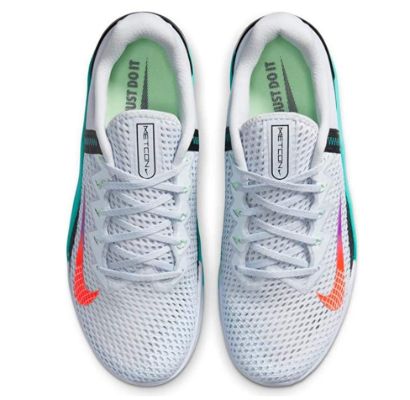
The Metcon 6’s low, wide heel provides a stable base for weightlifting. It’s combined with added stability and excellent ventilation for a shoe that stays cool and works well for both heavy weights and intense aerobic workouts.
$179 from Amazon.com
Best Gym Shoes for Men Overall: Nike Metcon 6
Best Weightlifting Shoe for Men: Adidas Powerlift 4
Best Cross Training Gym Shoe for Men: New Balance Minimus 40 V1 Cross Trainer
Best Gym Shoe for Running: Reebok Nano X
Best Lightweight Gym Shoe for Men: York The Henry
Best Gym Shoe for Rope Climbs: Under Armour TriBase Reign 2 Training Shoes

Best Men’s Gym Shoes Overall:
Nike Metcon 6
- Enhanced breathability with a lightweight mesh upper
- Strategic cushioning placement to support both heavy weightlifting and high-impact workouts
- Removable Hyperlift insert
The Metcon 6 provides traction and stability for a wide range of workouts, and its design makes some improvements over an already impressive shoe. This rendition of the Metcon features a breathable, lightweight mesh upper that’s stabilized with an eye-grabbing screen print.
A low, wide heel filled with firm foam creates the foundation and stability for heavy lifts. The heel includes a removable Hyperlift insert, so you can adjust the heel height based on the type of lift you’re doing. Yet, in the forefoot, there’s softer cushioning for high-impact workouts like box jumps and ladders.
Tip: It’s best to wear sneakers designed for your specific type of workout. For example, running shoes have a flexible sole with extra cushioning, while weightlifting shoes have a low, firm heel for added stability. Using the wrong type of shoe during a workout can reduce the efficiency of your training and put you at risk for injury.
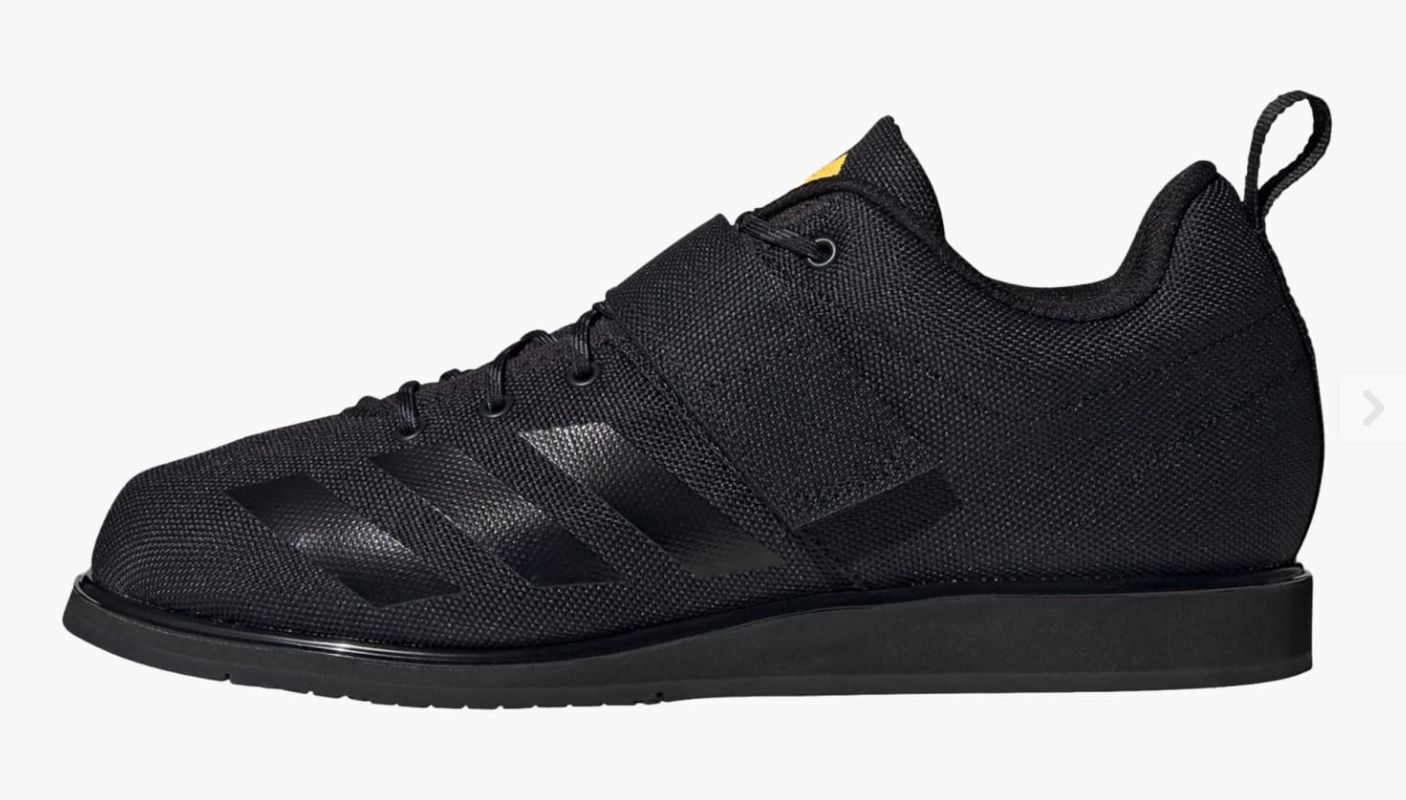
Best Weightlifting Shoe for Men:
Adidas Powerlift 4
- Canvas upper reduces weight
- Open forefoot and flexible toe for enhanced stability
- 0.6-inch heel with high-density EVA foam that supports all but the highest weights
Weightlifting shoes have low, firm heels, so you can use the force of the weights and your own body’s force to lift heavyweights. The Powerlift 4’s .6-inch heel is constructed with high-density EVA foam that helps you stay grounded and uses the force of the weight to manipulate the bar through every lift. The foam supports most weights except for lifters maxing out at over 600+ pounds.
A highly durable but lightweight upper reduces the overall weight of the shoe in comparison to earlier versions. The durable canvas breaks in faster than stiffer weightlifting shoes. However, that makes it slightly less breathable. An open forefoot and flexible toe stabilizer work through each lift for better control. Finally, a heel loop helps you slide the shoe on and off, which is particularly nice if you’re making a mid-workout shoe change, and you’ve got sweaty hands.
Tip: Weightlifting shoes have a low but raised heel that helps you reach a deeper, more stable squat position.
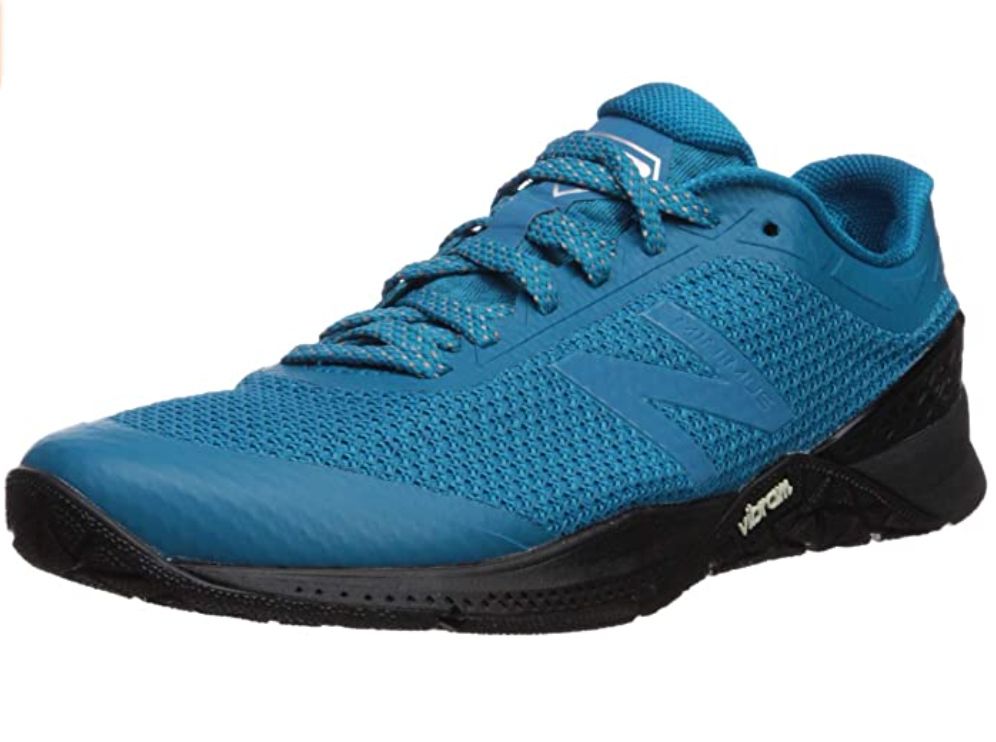
Best Cross Training Gym Shoe for Men:
New Balance Minimus 40 V1 Cross Trainer
- Excellent cushioning for run days
- Firm enough heel cushioning and stability features for moderate weights
- Lightweight and flexible sole for sprints or distance runs
If you need a shoe for weights, jump roping, and running all in the same workout, the New Balance Minimus 40 V1 Cross Trainer is one of the best cross-training shoes available. It brings a combination of stability and cushioning that works for moderate weightlifting but lets you transition to a run without changing sneakers.
Athletes who transition through weights and cardio events will appreciate the balance and quick rebound in the REVlite midsole. It improves energy return to propel you through runs but doesn’t compress too much under mid-range weights. As far as cross trainers go, this model definitely leans toward running. The minimalist design plays off the strengths of the runner but gives just enough support for weights too.
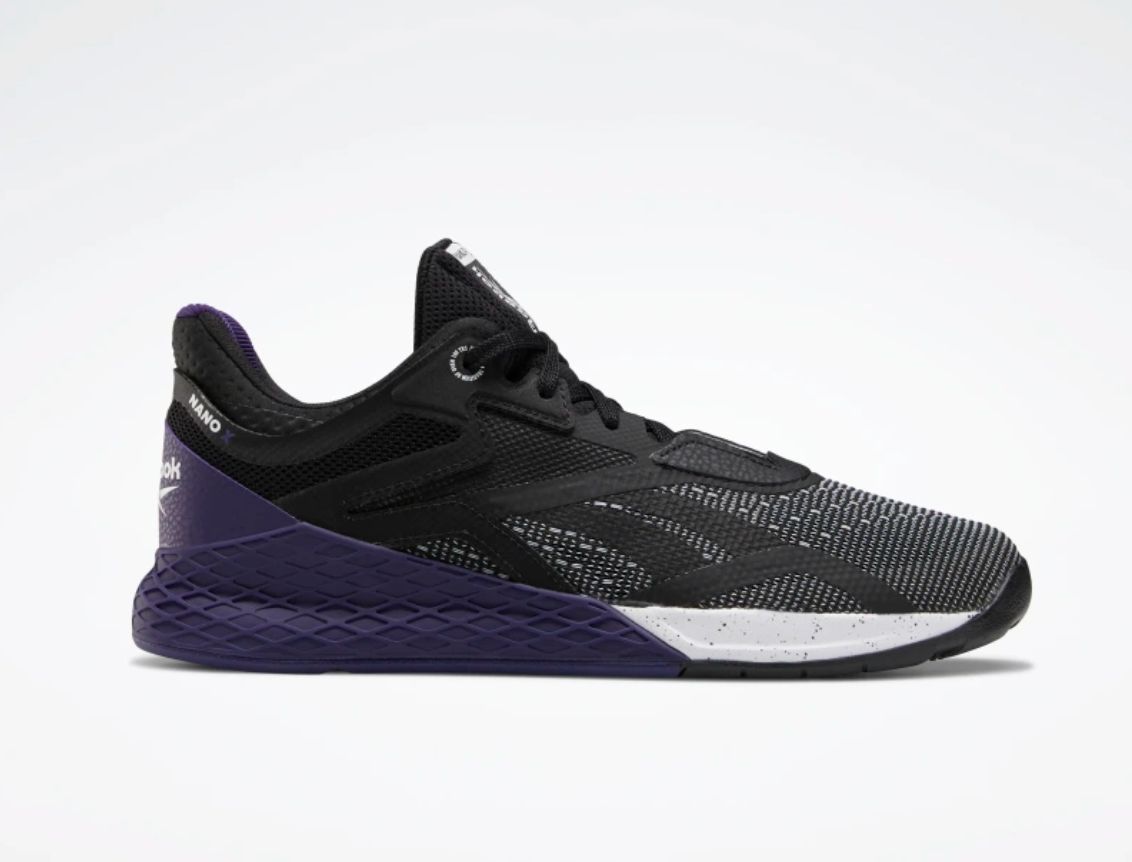
Best Gym Shoe for Running:
Reebok Nano X
- Minimal drop outsole for stability during non-running exercises
- Lightweight cushioning enhances quick foot movements
- Breathable Flexweave upper moves with the foot while adding stability
The Reebok Nano X’s strategic design features a Flexweave upper that has stability built into its structure in all the right places. That helps the Nano X move with the foot during dynamic moves but protects the foot at the same time.
The lightweight cushioning, however, is what makes it one of the best running shoes for those gym workouts. The cushioning comes with a minimal drop outsole that provides a good feel for the ground during medicine ball workouts, box jumps, and footwork drills. Yet, the cushioning absorbs the shock of foot strikes to save your muscles, ligaments, and joints while running.
Tip: Technically, most gym sneakers can withstand a trip through the washing machine. However, be careful about how often you wash them. Washing them more than once every six months could significantly reduce their life. In between washings, use a shoe brush to remove dirt and debris.
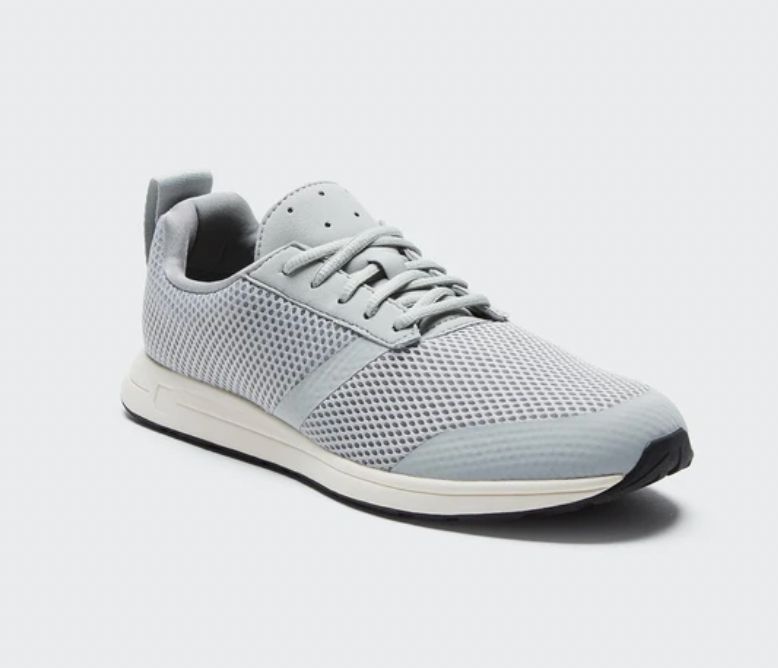
Best Lightweight Gym Shoe for Men:
York The Henry
- Lightweight design with cushioning and support for light to mid-intensity running workouts
- Low profile and stability features enhance lifting workouts
- Mesh upper and moisture-wicking lining keep the feet cool
York’s The Henry challenges the athletic sneakers of the major shoe manufacturers. These shoes look as good on the street as they do in the gym. Part of that comes from their lightweight mesh upper that fully encases the foot and allows air to circulate. The stretchy mesh upper also molds to the foot, so that the shoe moves with you through each exercise. Breathability gets even better on the inside with a moisture-wicking lining.
This lightweight sneaker provides the traction, cushioning, and stability for intense gym workouts as well as short to mid-distance running exercises. The low-profile provides a good feel for the ground when lifting. This is one of the best workout shoes for tough training sessions that shred through less durable designs.
Unlike many other workout sneakers, The Henry looks classy and stylish outside of the gym. The ten color options look sleek and put together, so you can easily transition from your workout to the rest of your life.
Tip: Cross trainers typically weigh more than running shoes, but not The Henry. These shoes come in at only 8.3 ounces, which is comparable to many of the best running shoes.
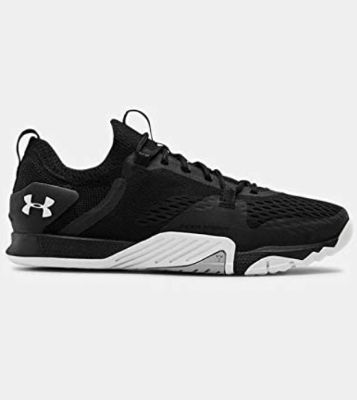
Best Gym Shoe for Rope Climbs:
Under Armour TriBase Reign 2 Training Shoes
- Ripstop upper resists abrasion and tearing
- Rubber outsole wraps around the shoe on the lateral and medial sides to grip climbing ropes
- Tri basic design in the outsole enhances support, grip, and balance
Rope climbs challenge the arms, back, shoulders, core, and legs. Dynamic moves put unique stresses on a gym shoe. Under Armour’s TriBase Reign Training Shoe features a full rubber outsole that wraps around on the lateral and medial sides to give you extra grip as you climb the rope. You can use your full body to pull and push your way to faster rope climb PR.
However, this shoe is fully equipped for weightlifting and dynamic, multiplanar exercises too. A tribase design in the outsole maximizes grip in the forefoot and heel for added stability and maximum power when lifting. An external heel counter helps hold the foot in place and locks the heel in, so you can focus on form. Finally, the upper is just as tough and effective as the outsole. It’s made of mesh and ripstop material that resists the abrasion that comes with workouts that have scrambling up ropes, ladders, and crawling your way to a better body.
Types of Gym Shoes for Men
The kind of gym shoes you need will depend on the activities you do. Weightlifters require a different shoe than someone who runs five miles a day or plays basketball after work. In some cases, it makes sense to have a specialty sneaker for each sport or activity. If you’re not looking to specialize, an all-around cross-trainer might fit your lifestyle.
| Cross Trainers | Weightlifting |
| Cross trainers are the workhorses of the gym. They’re a multi-use shoe that provides enough stability for weightlifting, cushioning for mid-distance runs, and support for basketball and other court sports. Cross trainers have wide soles that enhance traction and stability on lateral movement. They’re ideal for high-intensity interval training (HIIT), which may involve running, jumping, and lifting in a single workout. These are the shoes for the versatile athlete who gets bored if he’s stuck in one sport for too long. | Lifting weights requires shoes with excellent stability and a non-compressible sole. Weightlifting shoes often have a wide toe box with a stiff upper to support the foot and maintain stability through the forefoot. Straps over the laces secure and lock in the foot. High abrasion-resistant mesh or canvas in the upper add durability and overall strength. The heel fit is vital to successful lifts. If there’s any slipping or sliding in the heel, it can compromise stability and the ability to reach a deep squat position. To keep the body stable, this type of shoe typically features a heel lift to improve ankle mobility and stability, allowing you to sink deeper into each lift. Some have a removable heel insert, so you can adjust the height based on the lift you’re doing. |
| Minimal | Running |
| A minimal shoe’s low offset, usually less than three millimeters, makes it feel almost like you’re walking barefoot. They’re not meant for every athlete or sport. Runners who land with a heel strike can bruise their heels without the cushioning of a running shoe, for example. However, some runners love the feel of a minimal shoe. Similarly, some weightlifters prefer a minimal sneaker, too. For weightlifters, this type of footwear feels similar to lifting in bare feet, which strengthens the foot’s muscles. However, if you lift heavy weights, a minimal shoe probably won’t provide enough support, cushioning, or stability and could leave you open to injury. | Many athletes use running shoes as an all-purpose, go-to option for any kind of athletic activity. They’re great shoes, but they’re designed for the specific needs of runners. Cushioning that absorbs the shock of repeated foot strikes, arch support, and internal guides that help the foot through a neutral gait, and narrower outsoles are the hallmarks of these sneakers. Some types, like trail runners, have aggressive traction to handle rocks, roots, and mountain trails. Long-distance running shoes, on the other hand, feature extra cushioning to prevent injury from the repeated stress of long miles on hard surfaces. Generally, running sneakers have too much cushioning for weightlifting and lack the stability needed for functional fitness or sports that require lateral movements. |
| Court Shoes | |
| Basketball, tennis, and volleyball are among the most common court sports. Lateral stability, court-specific traction, and toe caps are among the other unique features you’ll find on a court sneaker. These shoes are excellent for the sports for which they are designed. Some men use cross trainers rather than a court shoe. It’s really about what activities you do most and how specific you need the sneaker’s design to be that determines if you need a court shoe over a cross-trainer. |
What Makes a Good Gym Shoe for Men?
| Lateral Support | Lateral support features increase stability and prevent rolling the ankle. HIIT, court sports, and functional fitness classes often demand a shoe with lateral support. The support comes from guard rails that stabilize the foot and shoe for quick side-to-side movements. Lateral support can also come from stabilizing materials in the shoe’s upper. The outsole’s traction design and grip play a role in lateral support, too. For example, outsoles that wrap around the side of the sneaker give extra grip for explosive moves. |
| Outsole Design | The outsole determines how well the shoe grips. That, in part, comes from the traction pattern but also from the design and material. Cross trainers, for example, have wider outsoles that may wrap around the sides for rope climbs. Weightlifting shoes feature harder rubber but good traction to support weight and maintain a good grip on the ground. Running sneakers have a narrower outsole with traction designed for different surfaces like the road or trail. |
| Abrasion Resistant Upper | HIIT and functional fitness classes often involve moves requiring kneeling, rubbing, and scraping that put uppers to the test. If your activities require sliding stops, rope climbs, or other workouts where the upper takes a beating, look for an abrasion-resistant upper. |
| Offset/Heel to Toe Drop | The offset is the difference between the shoe’s toe and heel height. Some running shoes have an offset of up to 12 millimeters, while minimal shoes could have a 0 offset. The offset should support your chosen activity. Weightlifters need a lower, though not a zero, offset with a firmer heel. Cross trainers fall somewhere in the middle, between three and eight millimeters. |
| Cushioning | Cushioning can be thick and impact absorbent, firm and non-compressive, or somewhere in between. Thick, soft cushioning works well for runners, while weightlifters need firmer cushioning that lets them use force to push through a lift. Just be sure to buy a shoe with cushioning that’s adequate for the types of activities you do. |
| Weight | Everyone loves lightweight shoes because they take less energy to move. However, there are some features that you may need that add weight. Stability features like medial posts and guard rails add weight as do waterproof uppers. Mesh uppers and EVA foam, on the other hand, reduce weight. Your goal is to find a shoe with the cushioning and stability you need in the lightest weight possible. However, don’t sacrifice features that you need to support your foot and ankle structure in an effort to cut weight. |
| Traction | Needless to say, traction keeps you upright. The traction pattern should support the activity you’re doing. Weightlifting requires solid traction patterns in multiple areas to keep a stable grip when you’re deep into a lift. Running doesn’t require an aggressive traction pattern unless you’re hitting the trails. |
Know Your Foot Shape
| Wide, narrow, flatfooted, high arched—feet come in all shapes and sizes. Take a good look at your foot. Some shoe manufacturers have a last (shoe pattern) that will better fit your foot than others. Some are wider or narrow in the heel or toe box, while others have a higher arch to the insole. Many shoes come in wide width versions, too. If you have a low arch/flat foot, look for a shoe with stability features like guard rails and posts to prevent the foot from turning inward. High arches cannot withstand heavy impact as well as a neutral or low arch. If you have high arches, extra cushioning or a shoe with a higher than average insole curve protect the foot from injury. |
Frequently Asked Questions
Should I buy a specialized weightlifting shoe or a cross-trainer?
If you regularly lift heavy weights, you’ll perform better and protect yourself from injury using a weightlifting shoe. However, if you’re lifting moderate weights once or twice a week and doing other activities on the other days, a cross-trainer may provide adequate support.
How often should I replace my gym shoes?
There are several ways to gauge a shoe’s lifespan. For running shoes, it’s typically 300 to 500 miles. After that, the foams start to break down and lose their ability to absorb impact. Court shoes are typically used for 50 to 70 hours, depending on the intensity of play. As you can see, your workout schedule heavily influences how often the shoes need to be replaced. Most gym shoes should be replaced every six to seven months, at the very least. If you’re a dedicated gym-goer, it could be as often as every three or four months.
Can I use running shoes in the gym?
You can use running shoes in the gym. However, there are some things to think about. First, if you lift weights, the softer cushioning of a running shoe quickly compresses, making you less stable. Consequently, you may not perform as well, and you could injure yourself. Second, a running shoe’s narrower traction can also make you less stable when performing lateral movements like those required for functional fitness classes, court sports, and even weightlifting. Finally, a running shoe’s upper may break down under the abrasion that comes with intense gym workouts.
Final Advice
The right gym shoe can enhance your performance and reduce your chances of injury. Gym sneakers provide a foundation for every workout. Look for footwear that works for the majority of activities you do. Finally, make sure the shoe feels good. If it’s not comfortable, you’re not going to want to wear it, which could keep you from the gym.


